In her 1929 essay A Room of One's Own, Virginia Woolf, as a component of her reflections on the myriad subjects of 'women and fiction', reads her way, chronologically, through a bookcase of works written by women from across the centuries.
Here We Are! Women in Design 1900 – Today at the Vitra Design Museum, Weil am Rhein, has the feeling of Virginia Woolf's bookcase, allowing as it does for reflections on, and a critical questioning of, the myriad subjects of 'women and design'.......

Virginia Woolf opens A Room of One's Own, begins her reflections on 'women and fiction', in first the university landscape of early 20th century England and subsequently in the reading room of the British Museum, "if a truth is not to be found on the shelves of the British Museum, where, I asked myself, picking up a notebook and a pencil, is truth?"1
Truth, however, wasn't there. Just opinions, lots of opinions, lots of male opinions on females, lots of disparaging, slanderous, male opinions on females; thus frustrated and disappointed at her lack of progress, frustrated and disappointed at her inability to locate an answer, Woolf, or more accurately her narrator, decides "to narrow the enquiry and to ask the historian, who records not opinions but facts."
Similarly Here We Are! Women in Design 1900 – Today approaches its themes and subjects as a historical, chronological, exploration, opening not as Woolf's exploration in the 15th century but, as the title implies, in ca 1900 and the early years of not only design as a profession and of women in the fledgling profession of design, but also a period of social upheaval, certainly in the European/American context Here We Are! largely exists in, and that not least in terms of women's rights, of women demanding and establishing a wider and more active, more participatory, more voluble, role in society; a chapter that features alongside considerations on, for example, the English suffragette movement or the representation of women in media in the early 20th century, also discusses, early institutions involved in the advancement of female creativity, initially in contexts of the arts and crafts, one of the first arenas to open to females looking to earn an independent income, and latterly more design oriented institutions, including, and in addition to the ubiquitous Bauhaus, the less often discussed VkhUTEMAS in Moscow and the Loheland School for Physical Education, Agriculture and Crafts, an institution established in 1919 near Fulda, Germany, and thus in the same year as, and not a million miles from, Bauhaus Weimar. If as a women only institution, a female focussed institution, it was conceptually that million miles from Bauhaus Weimar.
The opening chapter also introducing selected notable, important, late 19th/early 20th century female designers, as in professional designers rather than the dilettantish amateurs, invariably of the wealthier classes, who so dominate popular perceptions of early 20th century design by women; professional designers including the likes of Louise Brigham whose self-build furniture constructed from packing boxes and shipping crates finds an echo in contemporary DIY, upcycling and pallet furniture; Gunta Stölzl, a creative whose innovation, perception and vision is all too often blurred by the popular focus on her position as a, the only, female Jungmeiseter, the only, Jungmeiseterin, at Bauhaus; or, and particularly pleasing, Gertrud Kleinhempel. As regular readers will be aware Kleinhempel, along with her contemporary Margarete Junge, being not only fascinating figures in the development of furniture design as an actual profession, but embodying so much of the how and the why we find ourselves today in a position where the (hi)story of women in design has to be (re)traced.
Including a (re)tracing of the (hi)stories of the many popularly known names encountered in Here We Are!'s second chapter with its focus on the years 1920 - 1950, and introductions to the likes of, and amongst others, Aino Aalto, Lilly Reich or Ray Eames, and thus designers who just a few short years ago everybody was certain we knew all about; until the realisation slowly dawned that we couldn't possibly, that there were clearly, clearly, aspects missing. And who thus embody not only the important, fundamental, contributions by females to the development of design positions and understandings of design, but who also through the brevity of, and the "wife/partner/subordinate of X" context of their, and their contemporaries, biographies and catalogues raisonnés, embody the biases, flaws and skews in our understandings of design, the biases, flaws and skews of the popular narrative of design (hi)story.
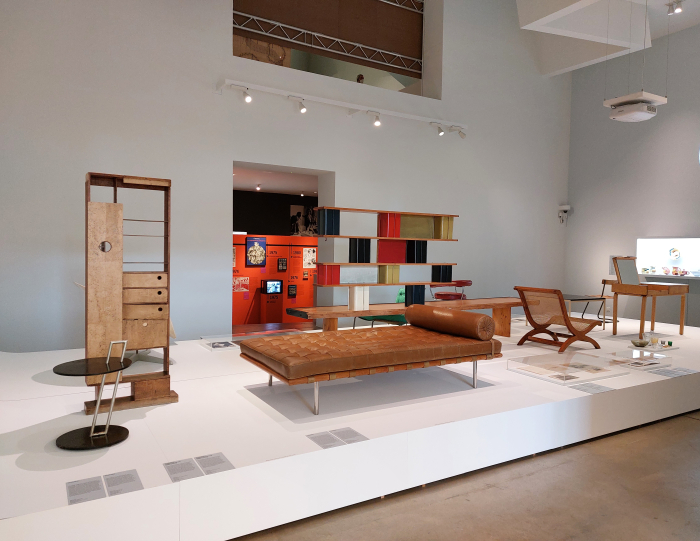
From 1950 Here We Are! undertakes a relatively sprightly tour through the first four post-War decades, or more accurately two tours: one through evolutions and developments in/off feminist thought, for all in context of the relationships between how the world we create around us informs and reinforces the shapes and structures of contemporary and future society, and a second tour through design of various genres realised in those four decades. The former tour taking the viewer from Simone de Beauvoir's 1949 book Le Deuxième Sexe to the founding in 1985 of the Guerrilla Girls collective via the likes of, and amongst many others, Betty Friedan, Denise Scott Brown or the Matrix collective; the latter presenting works by creatives as varied as, and amongst others, Grete Jalk, Rei Kawakubo or Anna Castelli Ferrieri, who, no, isn't represented by that/those. And while there is no direct correlation between the two threads, there is very much the understanding that without the former much of the latter wouldn't, couldn't, exist as it does today.
For as an exploration of the myriad subjects of 'women and design' Here We Are! is also an exploration of the problems and challenges women faced and face in context of the myriad subjects of 'women and design'; much as Woolf in asking why there are not more books from centuries past by women is analysing the conventions and restrictions which defined female participation in society in centuries past, so Here We Are! reflects on, challenges the viewer to reflect on, the social and cultural conventions and restrictions which have influenced and informed the myriad subjects of 'women and design'.
Yet whereas Woolf's discussion starts in a period where literature and society had long lived side by side, had slipped into a cosy familiarity, Here We Are!'s discussions begin at the genesis of design as a profession, the genesis of the relationship between design and society, at a moment when that relationship was, by necessity, in the process of being defined. And thus allowing one to approach an appreciation that the restrictions and conventions which defined female participation in design, which informed understandings of women and design, arose alongside design as a profession. Arose almost as inherent components of the developing fledgling profession of design. And could have been defined differently.
Or put another way, as previously noted, opined, looking back, as best one can through the 100+ years of mist that lie behind us, the fact that Gertrud Kleinhempel and Margarete Junge were working as professional designers, primarily professional furniture designers, in the first years of the 20th century wasn't weird. It raised no particular interest, other than that associated with the works they produced as objects in themselves. That Kleinhempel, Junge, and their many contemporaries, were female wasn't an issue.2 Design was genderless.
Then design became male. To paraphrase Simone de Beauvoir, design was not born, but rather became, male.
Here is neither the time nor place for a discussion on the reasons why design became male, why design became something, apparently, coded by the Y chromosome...... OK, technically here is exactly the time and place, but we've still got an awful of Here We Are! to get through, and so we'll restrict ourselves at this time and place to the observation that having become male, design remained male. With all the ongoing consequences that brings with it.
As an exhibition Here We Are! helps one approach an appreciation of not only why design remained male, of the social and cultural conventions and restrictions that influenced female participation in design in the century past, that informed understandings of female participation in design in the century past, but for all explores how the popular, unquestioned, accepted primacy of the Y chromosome in design started to, and continues to be, dismantled.
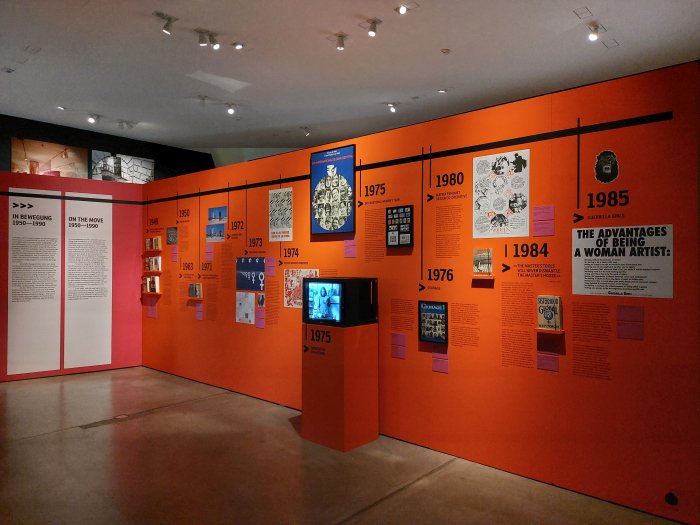
When we first read the announcement of the exhibition, we'll be honest, our heads fell into our collective palms as our souls cried a long, monotone, nnnnoooooooooooo!!!!!! Visions flashed before our rapidly moistening eyes of all those newspaper articles which explain in all seriousness to their readers that women today are successful as vintners, deer stalkers, chimney sweeps, undertakers, novelists, all manner of professions society reserves in its understandings for the male of the species, but which women have been happily, succesfully, practicising for centuries..... "and now, all of a sudden, we've discovered women can design!!!!", "and that at the Vitra Design Museum!!!!", we howled in despair, tears of frustration and anger welling in our cupped palms as the sky above our bowed heads, and our sinking hearts, turned ever darker shades of grey.
We were born of little faith. And have remained so.
Of course the Vitra Design Museum understand women can design. Of course the Vitra Design Museum understand that women have long designed. Understand that women have played every bit as important a role in the development of design as men. Have contributed every bit as much as men to evolutions in definitions and practices of design. But they also know that the common, popular, understanding of women and design doesn't reflect that reality. Appreciate that the popular understanding of the narrative of design (hi)story is male centred. Is a design (his)story. Appreciate that needs to change. Appreciate they are part of that need.
Thus, Here We Are! doesn't tell you that women can design, that is an accepted, there is no shock, no "O! M! G!", no "Look! A chair by a woman!! Crazy!!! Who knew!!!!"; rather Here We Are! seeks to highlight the structural aspects, the structural framework in which design occurs, in which design is perceived, in which design is realised, in which design is consumed; structural aspects which have long tended to reinforce the male dominated narrative of design (hi)story. Tended to reinforce that popular narrative of design (his)story.
Structural aspects such as, and amongst others, the teaching of design, while in terms of gender mixing and gender opportunities the design school landscape may have moved on a lot from the university landscape of early 20th century England through which Virginia Woolf's narrator strolled, the same can't always be said of the content and practice of design eduction; structural aspects such as the medial mediation of design, not just as presented in magazines and newspapers, but also books, search for females in most "Classics of Design" books and you'll find the same objects by the same females, invariably in cooperation with a male; structural aspects such as the museal collecting and archiving of design: "if a truth is not to be found on the shelves of the British Museum, where, I asked myself, picking up a notebook and a pencil, is truth?"
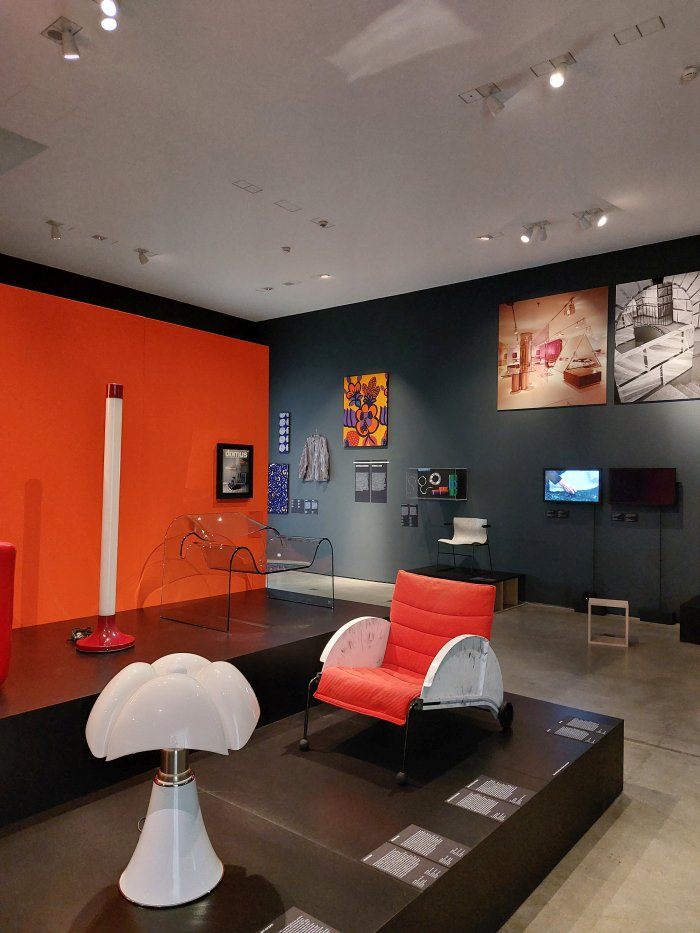
As oft noted, implied, in these dispatches, most extensively from the exhibition Female Traces at the Museum of Furniture Studies, Stockholm, anyone searching for the truth about 'women and design' in a museum in the 2020s is likely to leave as disappointed and frustrated as Woolf's narrator leaves the British Museum in the 1920s.
It is fair to say that over the decades, centuries, museums have not only primarily collected and archived works by males, and works considered important and relevant by males, but have also primarily exhibited works by males3, the Vitra Design Museum being an excellent case in point: in its 30 year history it has never presented a major monographic exhibition on a female designer/female collective. Consequently museums, through their collecting and mediation, have made a major contribution to reinforcing the apparent natural and self-evident maleness of design; something, for us, most elegantly demonstrated by the Museum of Modern Art, MoMA, New York who through their airbrushing in the 1930s, 40s & 50s of the contributions of the aforementioned Aino Aalto, Lilly Reich and Ray Eames unquestionably contributed to the need to (re)trace their careers, helped Aino, Lilly and Ray become lost in the shadows of Alvar, Ludwig and Charles.4
Here We Are! can be considered a component of the Vitra Design Museum's efforts to redress their own shortcomings in terms of gender diversity. Aside from the questions the exhibition inspires and reflections it demands, near all the exhibits in Here We Are! are from the museum's own collection, a state of affairs which, as the curators explain, forced a more detailed, more critical, appraisal, reappraisal, of their collection than would normally be the case, a critical reappraisal which posed questions as to what they collected, why they collected, wherefore they collected, questioned the validity and correctness of the attributions of their collection, and which also produced the showcase Spot On in the Vitra Design Museum Schaudepot with its focus on female designers, a showcase we'll return to at a later date as it very neatly expands on much of the discussion in Here We Are!
A critical reappraisal Here We Are! admonishes we all undertake when viewing any design exhibition, to critically appraise that which is being presented, the narrative we are being fed, the (hi)story unfolding before us, and to question if it is probable, to be more discerning and demanding in our consumption of design.
Not just in our consumption of design past, but of design present.
Which brings us to Here We Are!'s final chapter, or, to paraphrase Woolf's narrator, we have come at last, in the course of this rambling, to the room which presents design by the living.
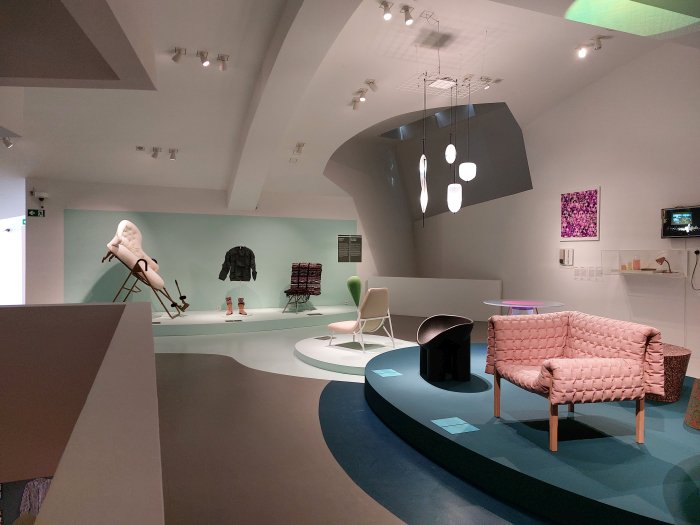
Just as Virginia Woolf's female authored bookcase becomes better stocked the closer she gets to her contemporary age, so to do women take up ever more space in the annals of design (hi)story the closer we get to our contemporary age; however, it would take a brave or foolish man, and it invariably would be a man, to claim all is good and equal in the world of design, for, despite any and all improvements, "the male is still the voluble sex".
Certainly in context of the furniture design that dominates in Here We Are!, and which is, inarguably, one of the more visible, popular, expressions of the designers trade. And which, as an industry, is one where, as so oft noted in these dispatches, females are primarily notable by their absence. Whereby Vitra is an excellent, and pertinent, case in point: one is after all in the Vitra Design Museum on the Vitra Campus next to the Vitra factory and the VitraHaus. You can't escape Vitra. And Vitra can't escape the fact that to peruse their designer roster is to peruse an awful lot of male faces. White males faces. Not that Vitra are alone in their white maleness, far from it, and thus for all the popular success and visibility of the likes of Hella Jongerius, Patricia Urquiola, Front or Inga Sempé, as featured in Here We Are!'s final chapter, the furniture industry represents one of the greater structural problems that needs to be resolved.
And also represents one of the areas where we all need to be more critical and questioning in our dealings; for, as with Woolf's bookcase, while there may be reasonings to be made for a lack of female protagonists in times past, many of those reasons have long since ceased to be. What are the industry's reasons, excuses, now?
Virginia Woolf ends her ruminations on the myriad subjects of 'women and fiction' with reflections on Shakespeare's sister, a fictional character she developed at length earlier in the essay through deliberations on what would have happened had Shakespeare had a sister who similarly wanted to follow a career in theatre and drama............ SPOILER ALERT............ It would end badly. But, Woolf admonishes, Shakespeare's sister is still out there, as a "continuing presence" and will one day become of flesh and bone, "drawing her life from the lives of the unknown who were her forerunners".
And while Woolf seems confident that the mere existence of those unknown forerunners suffices, Here We Are! ends with a presentation of contemporary projects seeking to not only increase the visibility of contemporary female designers, but also to pull female designers from times past from their obscurity and thereby enable them to become components of, contribute to, contemporary design discourse, to move them from a Here We Were to Here We Are including, for example, Zagreb based Oaza collective's ongoing research project on 30 female designers active during the mid-20th century in the present day Croatia, or contemporary research and documentation on Jane Dillon, an English designer who, after working with Ettore Sottsass at Olivetti in the late 60s/early 70s, established her own studio, and then slipped from view.
And thereby ends with the perspective that through (re)tracing, reanimating, the lives of the great many female forerunners, be that through exhibitions such as Here We Are! or independent reaserch projects, we can collectively reach the understanding that, and as Woolf sketches in terms of writing, throughout history, and amidst the noise and posturing of male designers, female designers have always been active, have always been contributing, and thus Here We Are! ends with the possibility, an invitation?, that going forward design can return to that place where it once was, that we can return to a time when it was of no interest if a designer was male or female, alone the quality of the work counted, can return to a time when design was genderless.
To a time before women in design had to announce Here We Are!!!
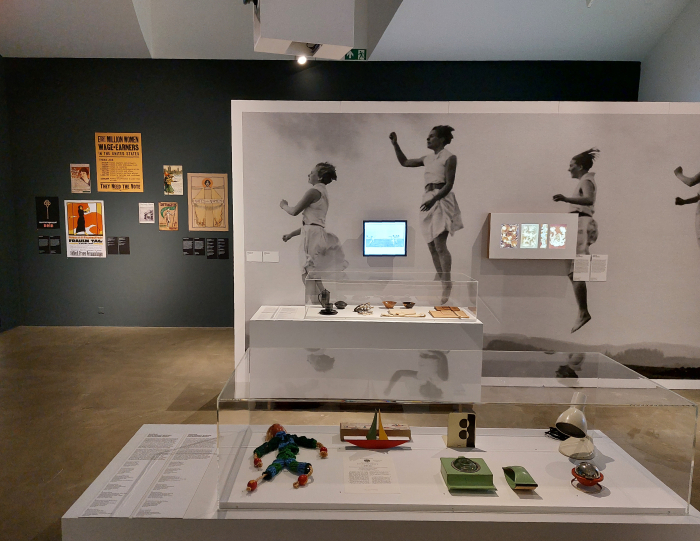
Whereby we're assuming the title is ironic, as in Cooee!!! Drum Roll Please!!!
If we were ever to discover it is actually meant seriously we would fall back into our aforementioned despair; but as a play on the popular, the popularly unquestioned, understanding of the narrative of design (hi)story as a (his)story, of a narrative that where if a woman is involved then either as an out-and-out exception to a natural law or as a muse who at most had something to with the materials and/or the colours, and also as a play on the lack of visibility of female designers both through the decades and in our present day, Here We Are! tickles us in its appropriateness, brutality, unapologeticness and cheek. Or does so now that we've seen the exhibition.
Before we'd seen the exhibition the title grated.
As did the idea of an exhibition exploring the myriad subjects of 'women and design'. Why we asked, can't an institution such as the Vitra Design Museum present a major monographic exhibition on an interesting and important female designer (hi)story has chosen to obscure, of which as Here We Are! underscores, there are a great many to choose from; say a Gertrud Kleinhempel, or a Clara Porset, or a Anna Castelli Ferrieri, or an Aino Aalto, who on reflection came up more than little short in the Vitra Design Museum's exhibition Alvar Aalto – Second Nature. But that was 2014. The world was a different place back then. Who knew? But now we do know, it would only be polite to redress the affront.
However, having viewed Here We Are! we appreciate that absurd and grating as it unquestionably is, as an exhibition it is in many regards necessary. The popular narrative of design (hi)story is not only incomplete in its diversity, but is also home to lots of disparaging, slanderous, opinions of the type one can read in the British Museum under the keyword "women"; and while it is without question important that those obscured female designers individually retake their place on design's helix, and that as designers not as women, it is just as important that the many holes in the narrative of design (hi)story are filled, that the many missing layers of the narrative of design (hi)story are relaid, that, as Vera Sacchetti and Matylda Krzykowski implored at the Kunstgewerbemuseum Dresden, we Add to the Cake.
Here We Are! offers a bounty of ingredients, offers the opportunity to fundamentally transform and reimagine that cake.
Whereby Here We Are! can be but an overview, can't begin to tell everything, can't "hand you after an hour's discourse a nugget of pure truth to wrap up between the pages of your notebooks and keep on the mantelpiece for ever", and as with Virginia Woolf, doesn't seek to. Rather as an exhibition it guides you to places, people, positions, perspectives, moments and "give[s] ones audience the chance of drawing their own conclusions". And for all leaves the rest of the work to you to undertake yourselves.
In which context there is, regrettably, no catalogue; a consequence of the limitations and challenges of museal life in time of Corona. And a genuine shame for much as an exhibition can do, they tend to have finite existences, a catalogue enabling it to have a infinite existence, holding firm for the future that learned in the course of the preparation, allows for perspectives and voices the physical limitations and conceptual parameters of an exhibition have, by necessity, to omit, and for all provides a source and stimulus for wider, differentiated, research by a wider, differentiated, body of researchers. Professional and lay alike. And so it is to be hoped that something can be organised.
And there may time for that: in terms of content, layout, structure and scope Here We Are! looks and feels like an exhibition that will travel well, and if it does not only allows the catalogue to be launched at a later incarnation, but allows the possibility to replace some of the local southern German/Swiss designers featured in Weil am Rhein with local local female designers whose (hi)story has become obscured in time's passage, and thereby expanding the archive, enriching the cake mix, and thereby also (potentially) underscoring the simultaneous geographic globality and local specifics of the myriad subjects of 'women and design'.
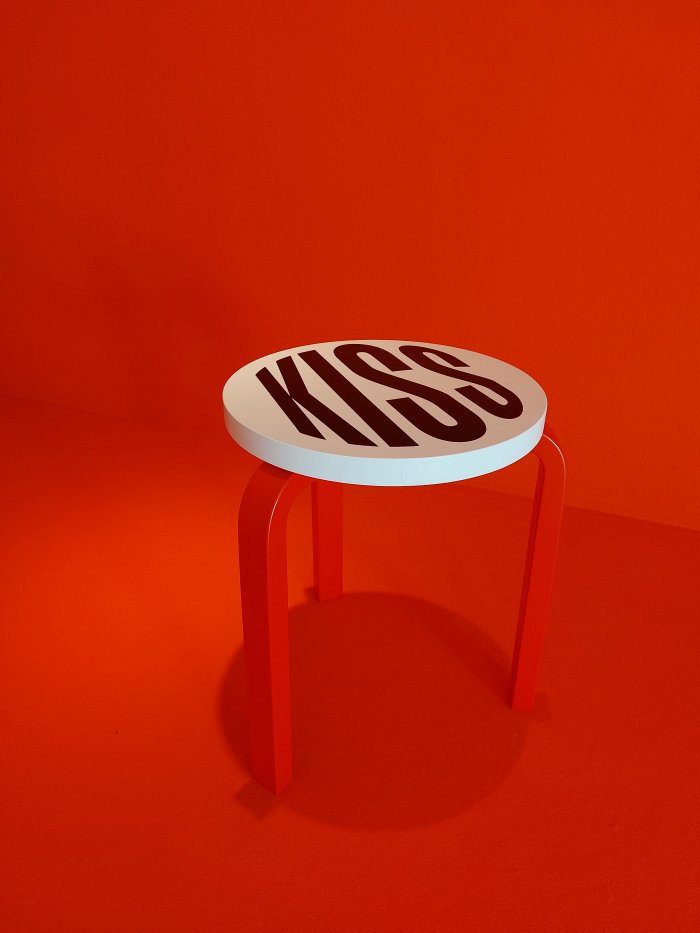
A well-paced, logically designed and composed exhibition, which presents a very satisfying array and mix of works popularly known and popularly unknown by designers popularly known and popularly unknown, and which discusses its various themes not only in varied and diverse contexts but across a spectrum of design genres, including design research and the business of design, among the more pleasing aspects of Here We Are! is that, as with Virginia Woolf, it doesn't seek to compare female and male designers, isn't interested in exploring if there are any particularly feminine or particularly masculine aspect of design, there is no "pitting of sex against sex, of quality against quality", no measuring or awarding cups, and it certainly isn't looking to highlight the added value of a woman's touch; rather it considers design as a profession in context of the relationships between prevailing social realities and the structural constructs such give rise to through the conduit of women's experiences, women's voices, women's fates. And in doing such is as much as exhibition about the myriad subjects of 'women and society' as it is about the myriad subjects of 'women and design'. Thereby further underscoring the complex interdependency of design and society.
And does that in a very accessible manner. For all the risks, temptations, to wander into the depths of social and feminist theory's mines, Here We Are! keeps things simple while never denying the complexity that lies below surface, and which is important in reaching as wide, and diverse, an audience as possible.
A wide audience that needs to be reached, not least because going forward it is important that we all better understand the path we've taken to where we are, not just in terms of design, but in terms of wider society, isn't one that is accurately charted, is one of biases, flaws and skews. And as any fool kno you can't build a stable, secure and sustainable future on a flawed and skewed foundation.
Here We Are! can't and won't level those foundations on its own, can't and won't resolve the biases, flaws and skews in the narrative of design (hi)story; but does not only allow them to become visible, but helps place them in frameworks, helps contextualise them, makes them available for discussion and thus, as with Virginia Woolf's bookcase, is an apposite location for reflecting on the myriad themes, associations, relationships and questions that are 'women and design'. And for all highlights that reflecting on 'women and design' requires a lot more than "a few remarks about Fanny Burney; a few more about Jane Austen; a tribute to the Brontës and a sketch of Haworth Parsonage under snow; some witticisms if possible about Miss Mitford; a respectful allusion to George Eliot; a reference to Mrs Gaskell..."
Here We Are! Women in Design 1900 – Today is scheduled to run at the Vitra Design Museum, Charles-Eames-Str. 2, 79576 Weil am Rhein until Sunday March 6th
Full details can be found at www.design-museum.de/here-we-are
And as ever in these times, if you are planning visiting any exhibition please familiarise yourself in advance with the current ticketing, entry, safety, hygiene, cloakroom, etc rules and systems. And during your visit please stay safe, stay responsible, and above all, stay curious……
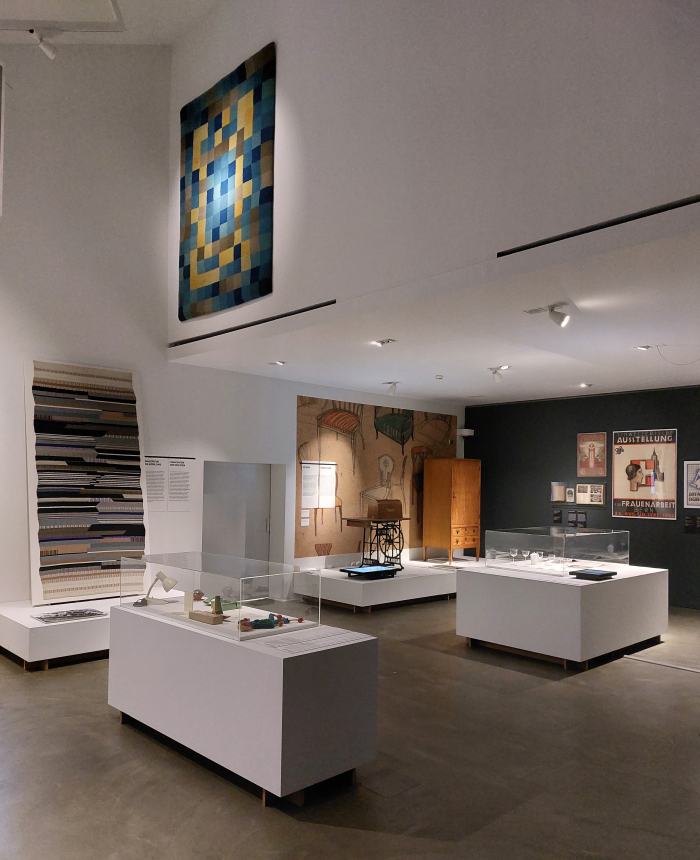
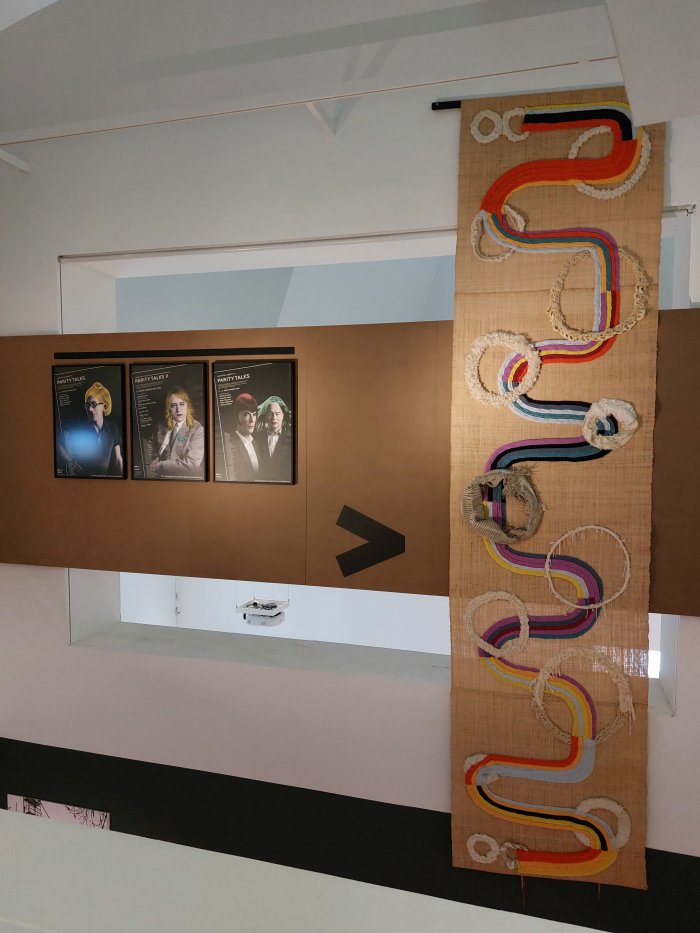
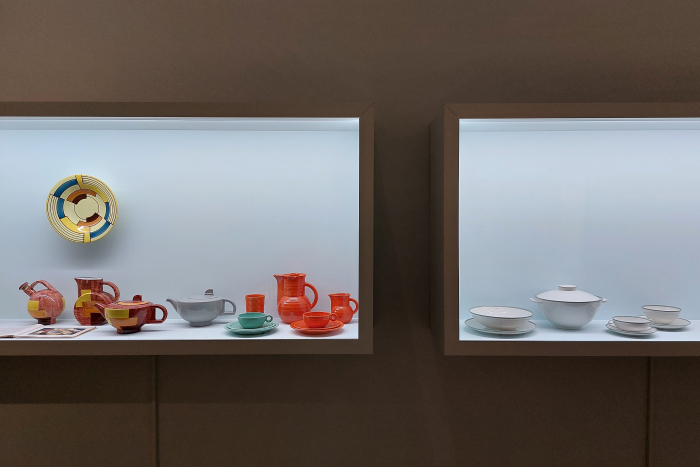
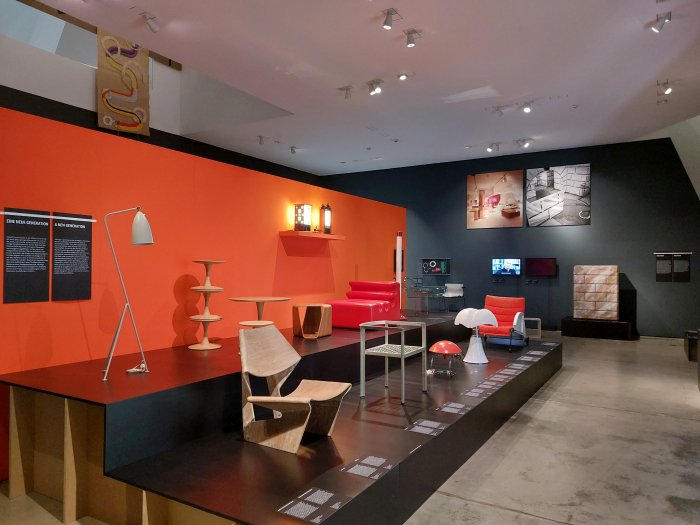
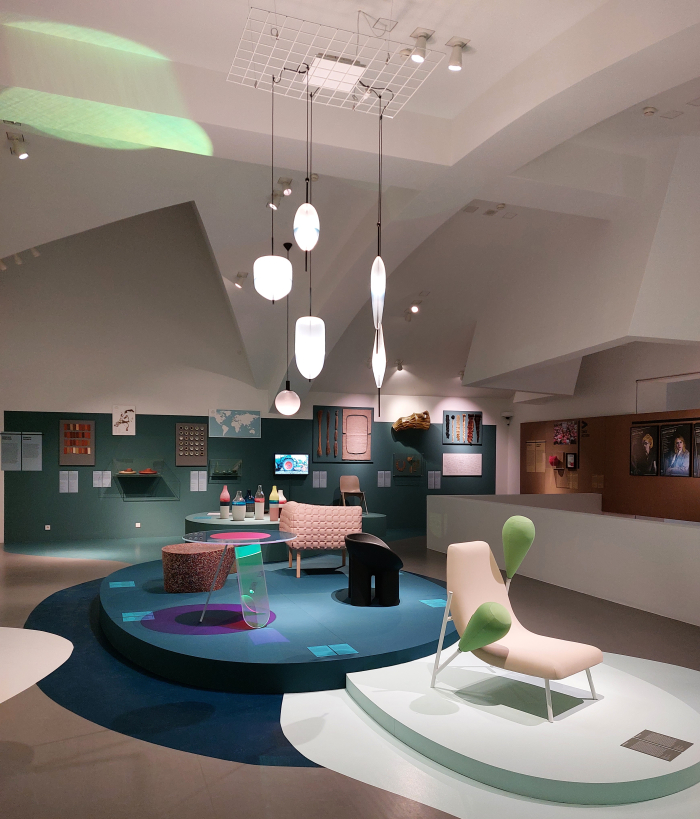
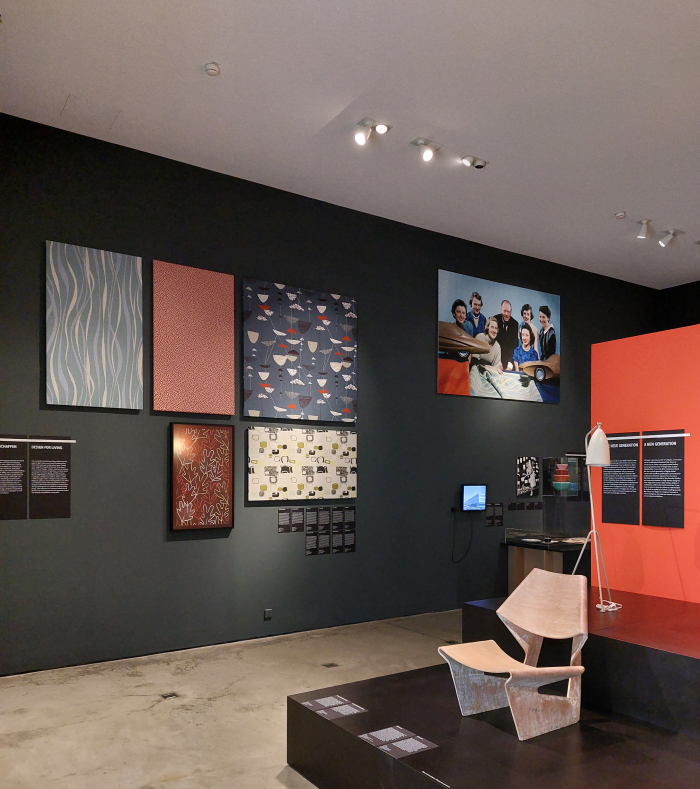
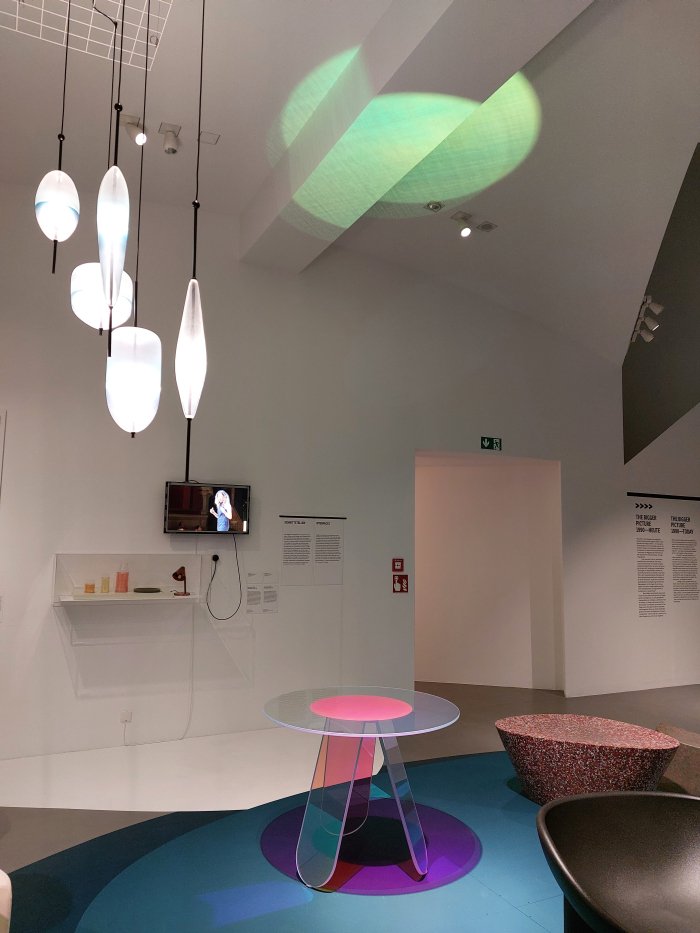
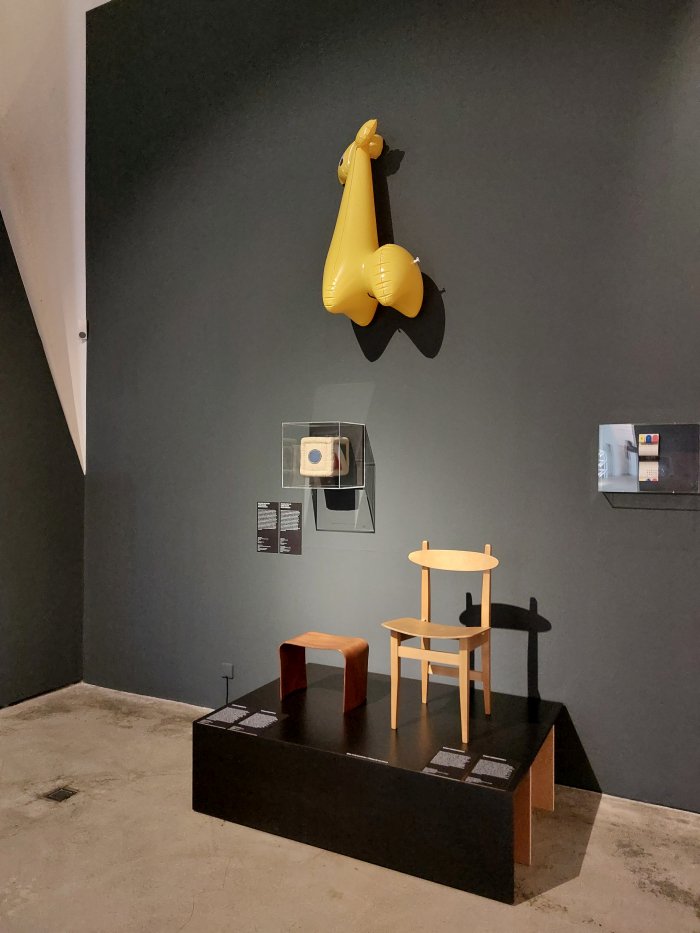
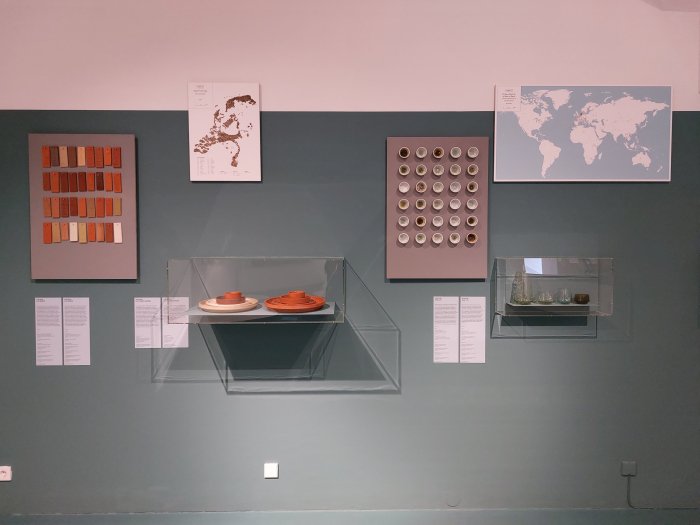
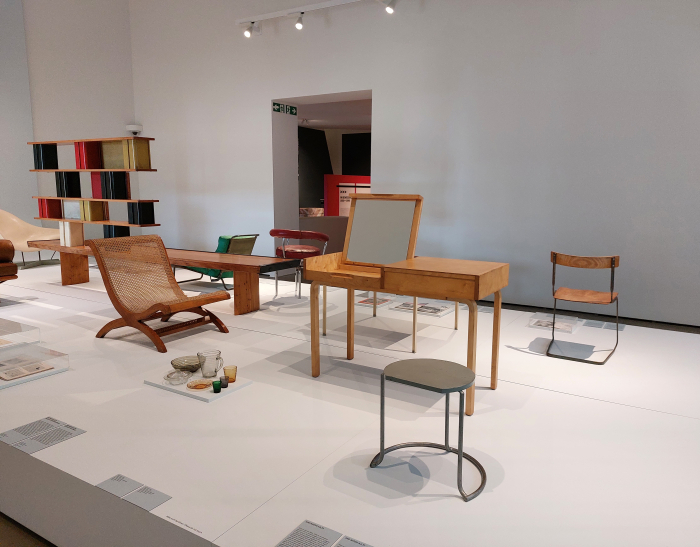
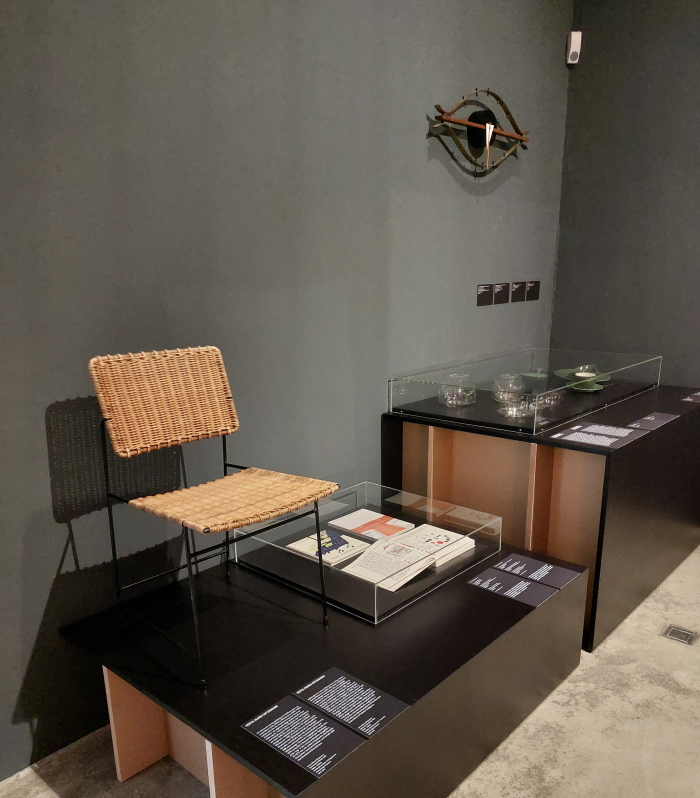
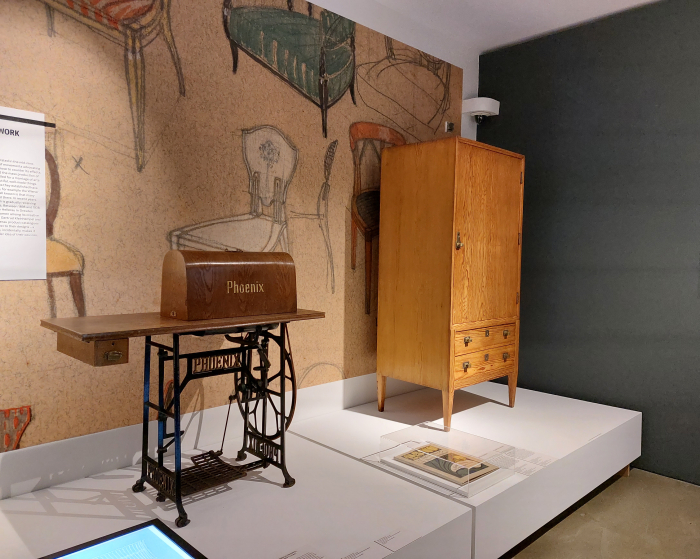
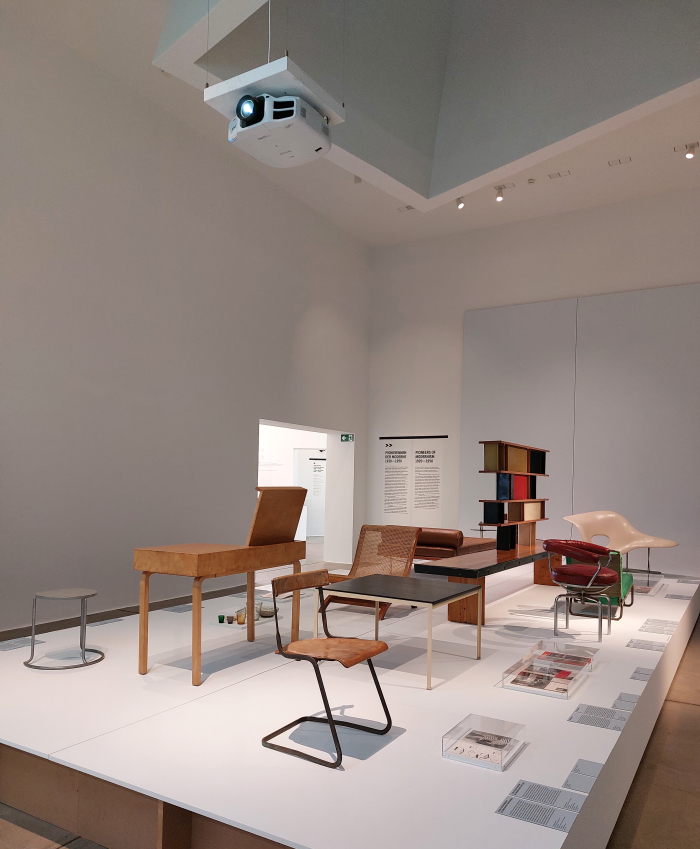
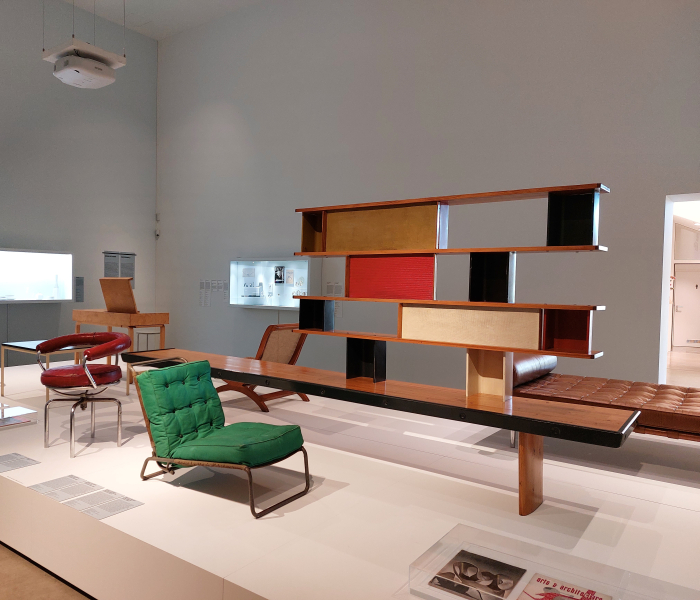
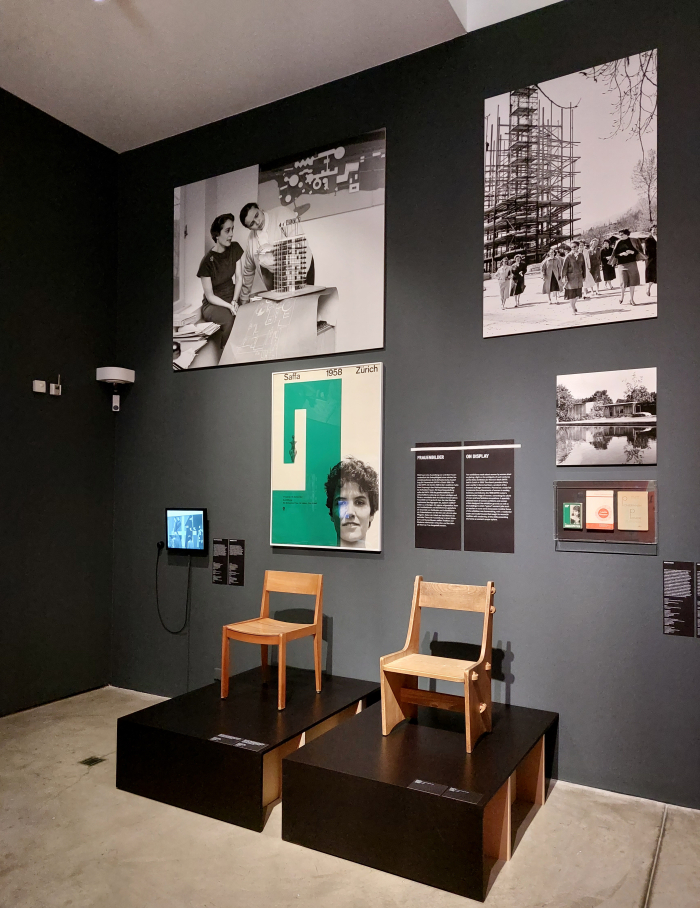
1and all further quotes unless otherwise stated, Virginia Woolf, A Room of One's Own, in Virginia Woolf, A Room of One's Own and Three Guineas, Penguin Classics, 2019
2Yes in his 1902 Innendekoration article on the Dresdner Werkstätten für Handwerkskunst Henry van der Velde does note that Kleinhempel and Junge are female, and make a coupe of patronising, disparaging back handed compliments, but on the whole is appreciative of their works, see Henry van de Velde, Werkstätten für Handwerks-kunst, Innendekoration. Mein Heim. Mein Stolz, Vol. 13, Nr. 6, Juni, 1902, page 153ff https://digi.ub.uni-heidelberg.de/diglit/innendekoration1902/0160/image (accessed 26.09.2021). But generally in the eralier years of the 20th century gender isn't an issue, that started to change in the second decade of 20th the century, see, for example, Paul Westheim, Ausstellung, “Die Frau in Haus und beruf” in Zoologischen Garten, Kunstgewerbeblatt, Vol,. 23 Nr 7 April 1912, page 142-143 or Robert Breuer, Die Frau als Möbelbauerin, Fachblatt für Holzarbeiter, Vol 10, 1915 page 101ff.
3Design museums need to be transparent about the mix, the diversity, of their collections and presentation, not just in terms of gender, but in all possible aspects, and arguably in terms of gender they are further ahead than in other contexts, it'll probably be another 30 years before any European design museum stages Here We Are - Black Designers 1900 - Today. That the subject at hand is gender we focus on that....
4It's the subject, subjects, for another day, but for now, and as already noted elsewhere in these dispatches: